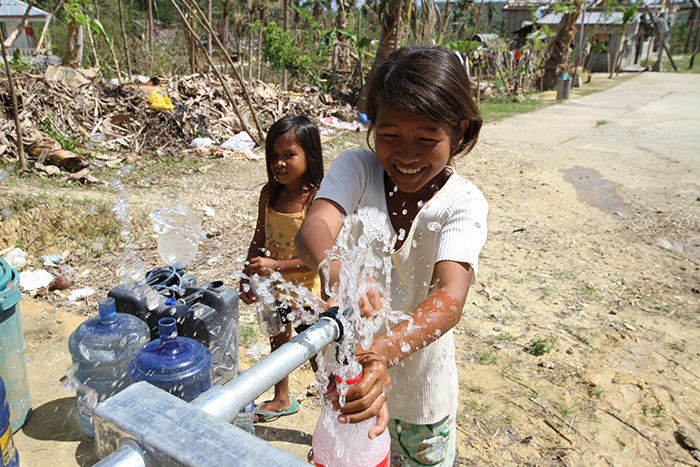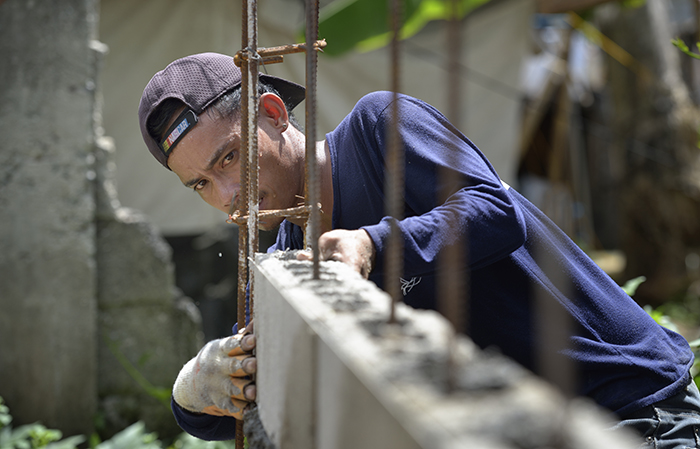
November 8th marks the first anniversary of typhoon Hayian in the Philippines, where 8,000 people died and four million lost their homes. NCA was quickly on the ground with relief and thanks to Norwegian donors reached out with relief to 80,000 people. Now we finish our work in the Philippines.

Typhoon Haiyan struck the Philippines with winds of 350 kilometer per hour and smashed almost all of the buildings and trees in a belt of 600 kilometers. In the city of Tacloban the wind and storm surge waves up to seven meters destroyed more than 90 per cent of homes, schools, hospitals and infrastructure, and one could see corpses, garbage and faeces floating in the streets. It was urgent to respond quickly in order to save lives and prevent outbreak and spread of waterborne diseases such as diarrhea, cholera and other epidemics. 8,000 people lost their lives or have status as missing and 4 million people got their homes destroyed and lost their sources of income. In total, 14 million people were affected by the typhoon.
NCA immediately sent a team of water, sanitation and hygiene experts to the disaster-stricken area. Because we have prepositioned equipment which on short notice can be sent out to the whole world, we were able to establish three containers of relief supplies after a very short time. This equipment meant that we immediately could reach out with help to 15,000 people.
In Norway people willingly donated money to our work and thanks to their support and the support of the Ministry of Foreign Affairs, we reached out with water, latrines and hygiene measures to 50,000 people during the first few months.
In the first phase of the relief effort, we worked to save lives, ensure basic human needs and prevent diseases and outbreak of epidemics. We specialise in water, sanitation and hygiene, and set up water purification systems and temporary latrines. We distributed basic hygiene equipment such as soap, water containers, toothbrushes, sanitary napkins and diapers for the severely affected population. At the same time we gave lessons in how to protect against infectious diseases and how to treat dehydration and diarrhea. We also focused on the importance of hand washing after using the toilet and waste management through various information campaigns.

During the past year, NCA and our sister organisations in the ACT Alliance have repaired water systems, sanitary facilities, homes and schools. We have helped those who lost everything, including their revenue base, to reestablish their sources of income. Fishermen have received funding to acquire new boats and fishing equipment, farmers have received seeds for rice and vegetables and picks and shovels. Those who lost their shop in typhoon has received support to open again, and those who were engaged in traditional crafts such as mat weaving, has received suppor to get started again.
When we close our efforts in the Philippines, we have, thanks to the support from the Norwegian donors, reached out with help to a total of 80,000 people. Our projects are taken over by competent, dedicated Filipino organisations and people.
In September, the Philippine government declared the humanitarian disaster effort as over, and the work of reconstruction has entered a new phase. Still, the people living in the typhoon affected areas face huge challenges.
Philippine governments at all levels are facing massive criticism for a too late and a too weak effort. All buildings in large areas were wiped out, and the country is facing a huge challenge rebuilding the country. Parts of the disaster-affected population that was promised permanent houses, sees little to them. Many still live in tents that were distributed last November. These tents are full of mold and are not suitable for a wet and tropical climate. Only 213 of 19,600 classrooms and only 21 of the 161 public buildings are rebuilt. Very few of the damaged main roads have been repaired.
The local authorities are struggling to find and make available land for the population along the coast who need to move to safer areas, and more and more points to corruption, inefficiency and unnecessary bureaucracy as reasons for the slow response.
NCA’s sister organisations in the ACT Alliance will work with a land reform that protects the poorest, reduce corruption and ensure equitable distribution of the country's resources. While we all work to find a global solution to climate change. Local organisations keep working on and the locals show a huge voluntary willingness to rebuild the parts of the Philippines which was destroyed by the typhoon.
Published: